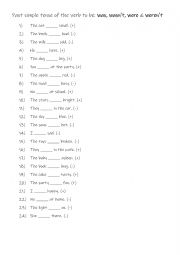
|
A1 Past simple tense of the verb to be: was, wasn�t, were & weren�t
Students read the sentences and complete it using the correct form of the verb to be. Answers on page 2
Level: elementary
Age: 8-100
Type:
Downloads: 129
|
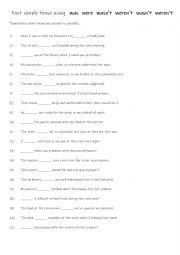
|
A1 Past simple tense using: was, were, was not & were not
Students read the sentences and complete them with the correct form of verb to be. Answers on page 2.
Level: elementary
Age: 8-100
Type: worksheet
Downloads: 121
|
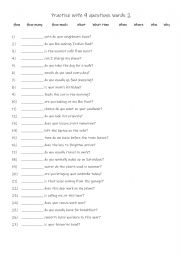
|
A1 Practise with 9 questions words 2
Students familiarise themselves with the 9 question words and their use. Then they read the questions to see which question word is required to complete the questions. Answers on page 2.
Level: elementary
Age: 7-100
Type:
Downloads: 111
|
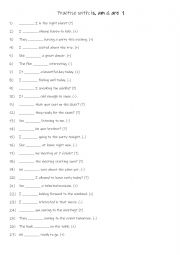
|
A1 Practise with is, am & are 1
Students should practise is, am, are, is not, am not, and are not because these forms of the verb to be are crucial for constructing present tense sentences, expressing states, identities, and descriptions, and forming affirmative, negative, and interrogative sentences. Mastery of these basics provides a foundation for learning more advanced gramma...
Level: elementary
Age: 7-100
Type:
Downloads: 106
|
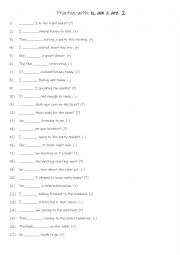
|
A1 Practise with is, am & are 2
Students read the sentence and complete the sentence with the correct form of the verb to be. They use the (+) or (-) sign at the end of the sentence to see if it needs a positive or negative form of the verb to be. Each form is used 3 times! Answers on page 2.
Level: elementary
Age: 7-8
Type:
Downloads: 119
|
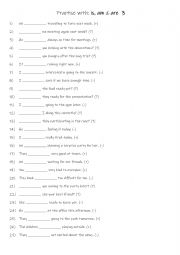
|
A1 Practise with is, am & are 3
Students read the sentence and complete the sentence with the correct form of the verb to be. They use the (+) or (-) sign at the end of the sentence to see if it needs a positive or negative form of the verb to be. Each form is used 3 times! Answers on page 2.
Level: elementary
Age: 7-100
Type:
Downloads: 118
|
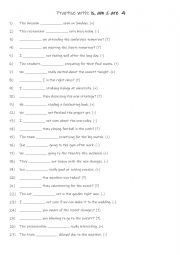
|
A1 Practise with is, am & are 4
Students read the sentence and complete the sentence with the correct form of the verb to be. They use the (+) or (-) sign at the end of the sentence to see if it needs a positive or negative form of the verb to be. Each form is used 3 times! Answers on page 2.
Level: elementary
Age: 6-100
Type:
Downloads: 111
|

|
A1 Practise with is, am & are 5
Students read the sentence and complete the sentence with the correct form of the verb to be. They use the (+) or (-) sign at the end of the sentence to see if it needs a positive or negative form of the verb to be. Each form is used 3 times! Answers on page 2.
Level: elementary
Age: 8-100
Type:
Downloads: 136
|
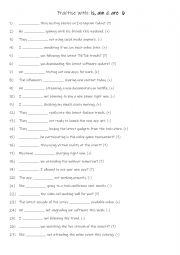
|
A1 Practise with is, am & are 6
Students read the sentence and complete the sentence with the correct form of the verb to be. They use the (+) or (-) sign at the end of the sentence to see if it needs a positive or negative form of the verb to be. Each form is used 3 times! Answers on page 2.
Level: elementary
Age: 7-100
Type:
Downloads: 134
|
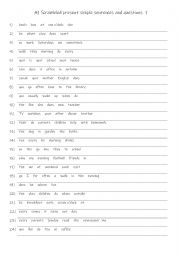
|
A1 Scrambled present simple sentences and questions 1
Practising scrambled present simple sentences and questions helps students understand correct word order, including subject-verb agreement and the use of auxiliaries in negatives and questions. It enhances their grammatical accuracy, boosts critical thinking as they rearrange words meaningfully, and improves their ability to form sentences quickly ...
Level: elementary
Age: 8-100
Type:
Downloads: 108
|












